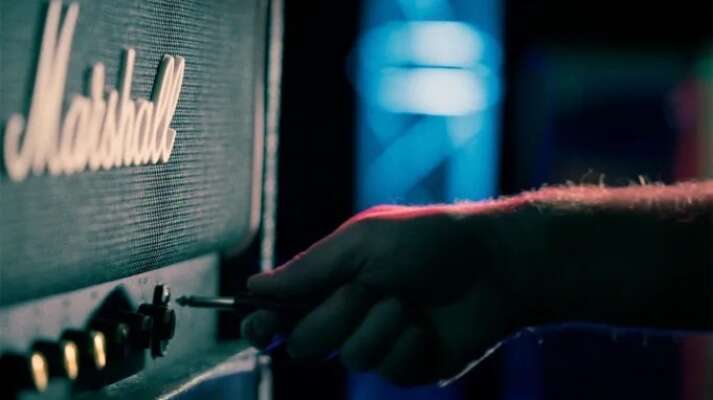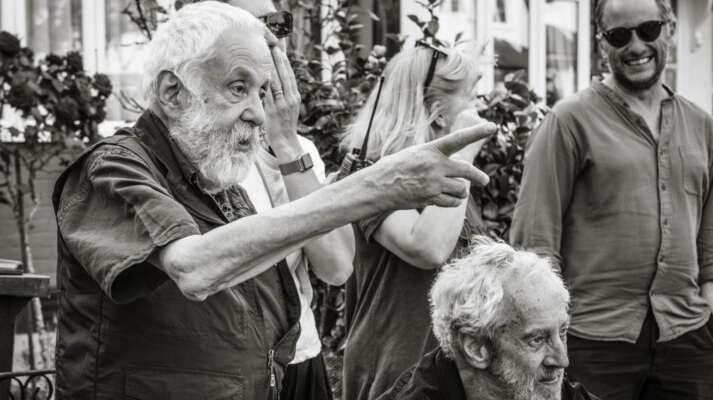Conceptualizing the Production Design of Beirut
Behind the scenes with production designer Arad Sawat
Conceptualizing the Production Design of Beirut
Written by Arad Sawat
For last fifteen years, production designer Arad Sawat has worked on such award-winning films as Foxtrot and A Tale of Love and Darkness. For each project, Sawat creates strikingly original spaces that feel both true to the director’s vision and part and parcel of the world in which the story takes place. In the following piece, Sawat takes us into his creative process by showing us how he visualized Beirut’s core ideas while honoring the complex historical reality of the city at the heart of the film.
I first read the script written by the brilliant Tony Gilroy when I was in Berlin, wrapping up the principal photography for my previous project.
Right off the bat, I was very impressed and intrigued by the way Tony succeeded in conveying the precarious existence in a country full of ups and downs, and the reality that resulted from the division and the conflict between the different factions who were active during those years in Lebanon.
This chaos created a reality and an atmosphere that were very specific to that period, and I found many visual overtones which shaped the film's depiction of that reality in Beirut. There is a dimension of horrifying narrative and visual poetry in the city's story, and I felt it was crucial for the impact of the crisis to be visible in the city's buildings and streets.
I initially created two concept sketches showing the contrast between pre- and mid-conflict Beirut. The first was of the 1970s Beirut, accurately described in the script as “Paris of the Middle East”, a city that was, for all practical purposes, the cultural and financial capital of this entire region. The second sketch was of Beirut in the 1980s – a crumbling city, riddled with fighting and conflict. Mason (the film's protagonist, brought to life by the talented John Hamm), had witnessed the city in both periods.

We first meet Mason in 1975 at a social cocktail event in his Beirut home, where he hosted an exotic blend of diplomats, powerbrokers, academics and politicians. Muslims on one side, Christians on the other, and in the middle – American Embassy employees and other Westerners. A polyglot blur of Arabic, French and English.
Working on the cocktail scene, I put together a few ideas for the set dressing, color palette, materials and styling, and made a mood board to give my crew an idea of the feel of the scene. I then started working on a sketch showing the composition of the different characters in the patio and living room. I wanted each room to serve as a background for the other, with connection between them allowing free movement of the actors and camera. My intention was to give the audience a peek into Mason's way of life and social scene, as well as to show the dynamics between him, the American Embassy staff and the other Beirut-based characters.

Brad Anderson is a very visual director. My dialogue and work process with him were exceptionally creative, and were a pleasure on both the personal and professional levels. We spoke at length about the scope and form of the destruction caused by the civil war in Beirut's streets, and about how to present the absurdity of life in the city during those turbulent years. We wanted to present Beirut specifically from Mason's perspective, so that the location would express his psyche and his experience of his return. Mason already had a relationship with Beirut from the time he had spent there in the 1970s, but he now returned as a broken man to a crumbling city; therefore, I designed the city streets with cracked and broken buildings.
We shot the film in Tangier, a beautiful seaside city in Morocco. Each street we filmed in required a great deal of construction work, including covering the buildings' façades, and covering the ground with piles of rubble and fragments of bombed buildings.

Brad and I also spoke at length about the design of the American Embassy in Beirut, as its operations room was one of the sets I had designed at an early stage of pre-production. The room is located in the Embassy's basement, where some of its best men and women worked frantically after the kidnapping of Cal, a veteran diplomat and Mason's former best friend, portrayed by the gifted Mark Pellegrino.

I designed the space as a type of basement with a low ceiling, equipped with the low-tech communication and surveillance devices available at the time. At the center of the basement I situated a quiet room – a separate chamber with noise-proof glass walls, enabling to observe the activity taking place inside it, but not to hear the top secret conversations taking place. I wanted the set to look functional and realistic, so that every workstation in the operations room would have a distinct purpose associated with surveillance and data analysis.
Beirut is a film which, from a visual perspective, is comprised of many fragments and sets. This is suggestive of Mason's search for Cal, as well as of our desire to accompany him through the different environments in is journey: from pre-war Beirut, through Boston and Beirut airport in the 1980s, to the city's streets and alleys. This, of course, required meticulous research and planning.
To avoid Beirut looking like a generic background, we carefully situated remains of movie theaters, pharmacies, coffee shops, etc. – remnants from the time the city was a cultural and financial capital where people lived normal lives, to emphasize the toll the civil war had taken on the it and on its inhabitants.

One of the challenges I faced during production was that the scenes were shot during the month-long Muslim holiday of Ramadan, which meant that the local crew was required to fast from sunrise to sundown. This greatly complicated matters, as we shot at numerous locations and needed to build and modify sets on a daily basis, to suit the specific look we wanted to achieve. Production Manager Steve Saeta was a lifesaver, and successfully navigated the crew and myself through the production, making the logistical challenge seem easy. I was also blessed to work alongside the ingenious Ian Bailey, who served as Supervising Art Director, and made sure that everything was proceeding according to plan. Our collaboration was interesting, and certainly an educational experience for me – at times resembling an efficient and precise military operation – and contributed greatly to the look of the film.

Another fruitful collaboration was, of course, with the film's insightful cinematographer, Björn Charpentier. Our dialogue was very architectural, and we talked extensively about using lighting and the actors' positions in the space. Björn is very precise in regard to lighting and composition. Many ideas arose during our meetings, which we later implemented while filming, such as using glossy lacquer on the walls of the operations room hallway, or designing a space so that the light would come through a window and hit a fallen chandelier, which would disperse it throughout the room.
We wanted the light to have a noticeable effect, to make the frame sweat in the hot Middle Eastern summer, lose its way in the chaotic atmosphere and in the clouds of dust and smoke produced by the fighting, and of course see the drops of perspiration on the actors' faces as they move from darkness into light, and vice versa.


